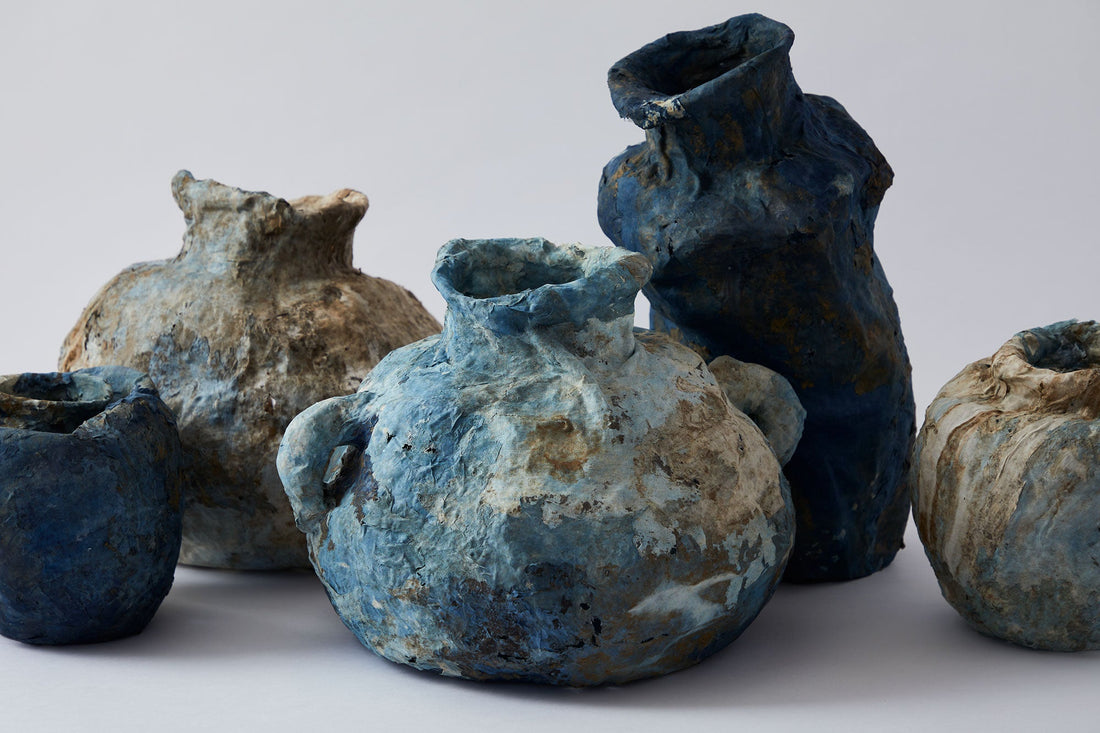
Share
Devote to the earth
TAMAKO YAMADA
JANUARY 11 SAT - FEBRUARY 2 SUN, 2025
Yamada’s creative process begins with the collection of textiles that are often deemed unsuitable for the market due to scratches, discoloration, or other imperfections. These textiles are then buried in the earth, initiating a natural process of decay aligned with the cycle of life.
In the soil, they coalesce with bacteria and subterranean organisms, entering into a state of symbiosis that fosters their gradual return to the earth. When unearthed, they emerge as fragile yet profound testimonies of their journey, reintroduced into the cycle of existence through Yamada’s artistic practice.
Each piece exudes a tender charm, evoking creatures that appear both human and animal, and carry an undeniable aura of newfound life. The exhibition will showcase works with a sacred and refined presence, meticulously composed of these fragments.

The purpose of creating this piece and the emotional motivation behind it.
The reason why I wanted to bury the cloth underground and let it corrode is to see everything about the material of the cloth, from its "origin". I have taken opportunities to get involved in the "origin", for example growing and harvesting cotton and spinning thread from silkworm cocoons. But I haven't had many opportunities to observe the final point of the material, especially when it changes into a different substance.
The expression of corrosion makes us recognize the invisibility of time and nature. Something invisible lurking in parallel with our daily lives, but certainly shakes our existence. This expression seems to show another reality.
The reason why many of the objects are hollow is to emphasize the thinness of the fabric, making the light penetrate through it. The moment when something thin and light causes a firm natural phenomena; it may sound like a contrast but it's interesting because these two can blend together.
All objects with the organic form of an animal and vessel, even lamp shades, have the same image from my perspective. I hope to convey the natural movement, undulation, strength, and sometimes engulfment presenting its own shape.
Brief technical description of the work (materials used, processes involved, etc.)
1) Plant fibers (cotton and hemp) are dyed with plant-based dyes, then the cloth is buried in soil to decompose.
The reason for using plant fibers (cotton and hemp) is because they decompose more efficiently. Synthetic fibers and everything with protein such as silk and wool takes longer. Raw fabrics without chemical treatment are needed, defective fabrics are also received from wholesalers with lower cost.
This year's plant dyes are a blend of indigo, madder and turmeric.
2) The decomposition speed and expression vary depending on the material of cloth, nature of soil, temperature and humidity. During the summer, the cloth will be excavated after 2 weeks, then washed.
Bacteria and large subsoil organisms (including earthworms) live near the surface due to the need of oxygen. Therefore, the cloth is buried between 10-20cm.
If a thin-layered cotton cloth gets buried for more than 2 weeks between July and August, it will completely corrode.
3) A prototype of the object is formed by wax, then the excavated cloth will cover the whole body; starch paste is used for adhesive. After drying, split the cloth and remove the wax object. The splitted part will be attached again, making a hollow cloth object.
Considering repeated usage, all prototypes are made out of wax. Adhesive is made out of natural material, making it feasible to return the object itself back to soil.

